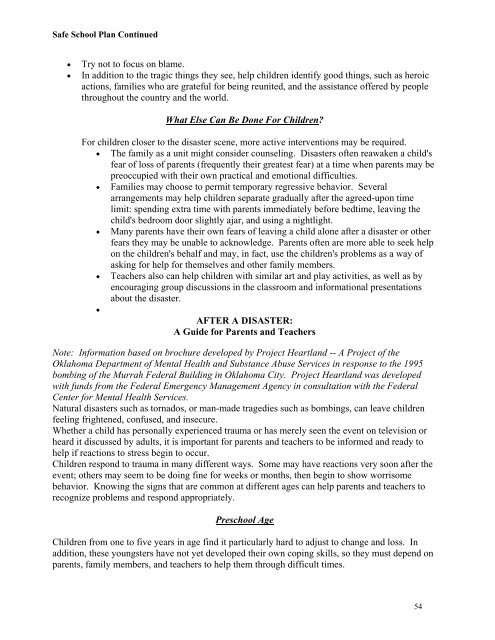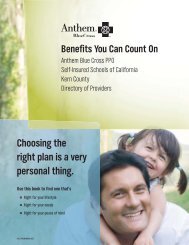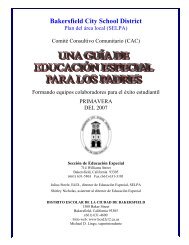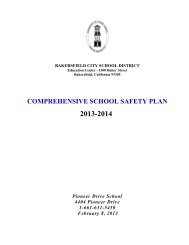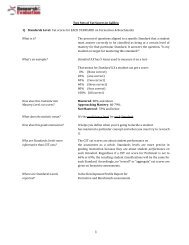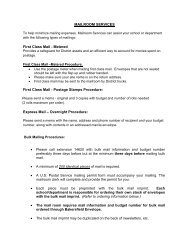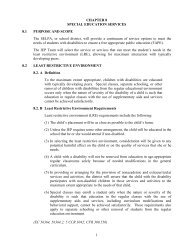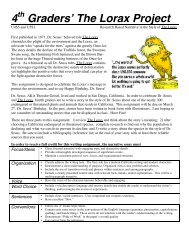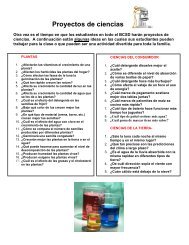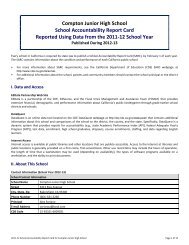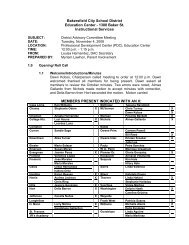Thorner - BCSD Static Server - Bakersfield City School District
Thorner - BCSD Static Server - Bakersfield City School District
Thorner - BCSD Static Server - Bakersfield City School District
Create successful ePaper yourself
Turn your PDF publications into a flip-book with our unique Google optimized e-Paper software.
Safe <strong>School</strong> Plan ContinuedTry not to focus on blame.In addition to the tragic things they see, help children identify good things, such as heroicactions, families who are grateful for being reunited, and the assistance offered by peoplethroughout the country and the world.What Else Can Be Done For Children?For children closer to the disaster scene, more active interventions may be required. The family as a unit might consider counseling. Disasters often reawaken a child'sfear of loss of parents (frequently their greatest fear) at a time when parents may bepreoccupied with their own practical and emotional difficulties. Families may choose to permit temporary regressive behavior. Severalarrangements may help children separate gradually after the agreed-upon timelimit: spending extra time with parents immediately before bedtime, leaving thechild's bedroom door slightly ajar, and using a nightlight. Many parents have their own fears of leaving a child alone after a disaster or otherfears they may be unable to acknowledge. Parents often are more able to seek helpon the children's behalf and may, in fact, use the children's problems as a way ofasking for help for themselves and other family members. Teachers also can help children with similar art and play activities, as well as byencouraging group discussions in the classroom and informational presentationsabout the disaster.AFTER A DISASTER:A Guide for Parents and TeachersNote: Information based on brochure developed by Project Heartland -- A Project of theOklahoma Department of Mental Health and Substance Abuse Services in response to the 1995bombing of the Murrah Federal Building in Oklahoma <strong>City</strong>. Project Heartland was developedwith funds from the Federal Emergency Management Agency in consultation with the FederalCenter for Mental Health Services.Natural disasters such as tornados, or man-made tragedies such as bombings, can leave childrenfeeling frightened, confused, and insecure.Whether a child has personally experienced trauma or has merely seen the event on television orheard it discussed by adults, it is important for parents and teachers to be informed and ready tohelp if reactions to stress begin to occur.Children respond to trauma in many different ways. Some may have reactions very soon after theevent; others may seem to be doing fine for weeks or months, then begin to show worrisomebehavior. Knowing the signs that are common at different ages can help parents and teachers torecognize problems and respond appropriately.Preschool AgeChildren from one to five years in age find it particularly hard to adjust to change and loss. Inaddition, these youngsters have not yet developed their own coping skills, so they must depend onparents, family members, and teachers to help them through difficult times.54


